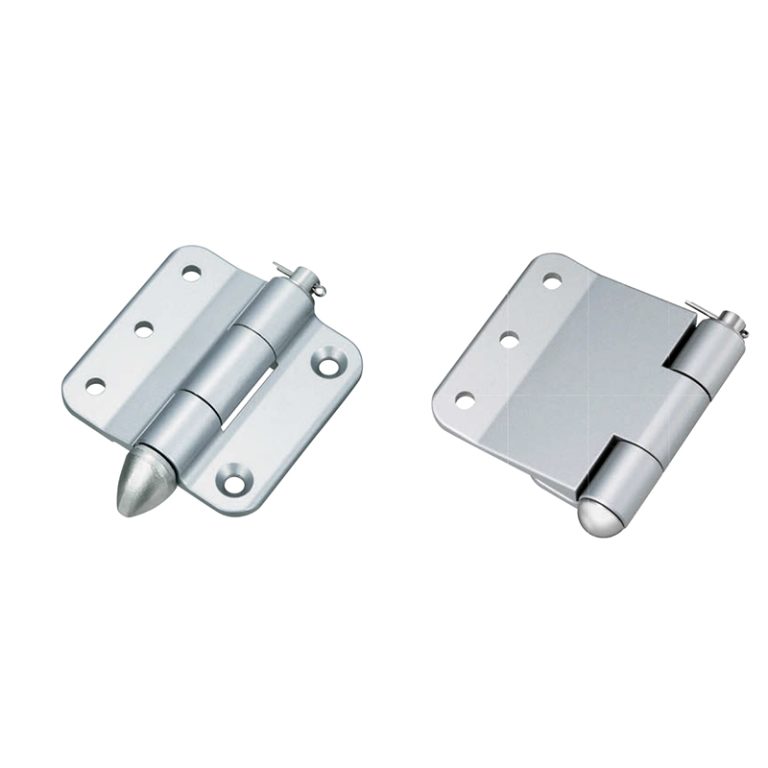Common Problems And Analysis of Fasteners
Common Problems And Analysis of Fasteners
Fasteners are also called standard parts in the market. They are mechanical components that can mechanically fix or connect two or more components. This article mainly introduces some common problems of fasteners.
How to tighten bolts and nuts?
Threaded connections with bolts and nuts are the most common in fastener applications. In order to ensure the strength of the connection, self-locking nuts are generally used, or additional mechanical locking is used to prevent loosening. The installation of threaded fasteners is also very simple, as long as there is enough torque to achieve the pre-tightening force at the interface, but there are still many people who are not sure whether to tighten it by acting on the nut or the bolt head.
① Should torque be applied to the bolt head or the nut when tightening?
② Does applying torque to the bolt head or nut produce the same result?
In fact, there is no single answer. In some cases, it is completely acceptable to tighten the bolt head while fixing the nut in place. However, in some applications, tightening the nut is the only feasible option. The judgment standard depends on the application (projection welding bolt or projection welding nut), the structure of the product itself, as well as the material and installation conditions.
In some applications, you can apply torque to the bolt head or nut and maintain a tight connection; but in the following application conditions, I am afraid that torque can only be applied to one of the components:
1. In the hole of interference fit, torque should be applied to the nut for installation.
2. Bolt heads and nuts have different shapes and diameters. When the shape of the bolt head and the nut are different (such as hexagonal head bolt formula nut) or the diameter is obviously different, it is best to apply torque on the side with the smaller load-bearing surface. For example, if the bolt head is smaller than the nut, torque should be applied to the bolt head. It can be simply understood as exerting strength in small places and bearing strength in great places.
3. Different materials. When two different materials need to be clamped together, it is best to apply a tightening force on the material with a lower coefficient of friction, that is to say, apply a torque on the side that may produce the least friction to tighten.
4. Application of long bolts. When torque is applied to the head of a long bolt, the problem of twisting and winding is very easy to occur. In this case, applying torque to the nut will help avoid this problem. In one application, the nut is a flanged nut, but the bolt head does not, which means that the friction radius on the nut side is larger than the bolt head side.
If the tightening torque is determined when the nut is to be tightened, then if this torque is used to tighten the bolt head, an overload problem may occur. Generally, nearly half of the torque needs to be used to overcome the friction under the fastening surface, so a smaller friction radius will result in more torque entering the threaded connection and therefore over-tightening problems. The reverse is also true. Assuming that the torque is determined based on the tightening of the bolt head, if the nut is tightened, that is, the torque is applied to the side with a larger friction radius, which will result in insufficient pre-tightening force at the input threaded connection, then it may cause loosening problems.
TorcStarkhydraulic torque wrench and bolt tensioner are matched with a fully automatic hydraulic pump, which can apply torque to nuts or bolts more accurately, so as to tighten the bolts without damaging the threads and prevent them from falling off.
The role of preload
When you choose a bolt-nut connection, you need to use a torsion tool or a manual wrench to apply a torsion force to achieve locking. The torque will eventually be converted into the pre-tightening force required by the connection part. A certain strength of pre-tightening force can ensure that the joint resists vibration loosening and fatigue. In most applications, the higher the pre-tightening force load, the better.
So what is the preload?
When you tighten a bolt or nut, tension is created between the head of the bolt and the head of the nut. This tension is like when you stretch a spring, the spring will always try to return to its normal state, and the stretched bolt will also try to return to its original length like the stretched spring to relieve the tension. As a result, a compression or pressing force is generated, which pulls the bolt head and the nut toward each other, thereby clamping the joint together.
However, in the process of fitting and installing bolts and nuts, there are many other factors that affect the magnitude of the pre-tightening force, such as friction, including the friction between the threads and the friction between the threaded parts and the connected parts. Therefore, we often discuss the abstract concept of “nut coefficient” to determine the relationship between input torque and preload.
T=KFD. T is the torque measurement value, K is the nut coefficient, F is the tension, and D is the bolt diameter.
When using this formula, if K, F, and D are known, the torque required to tighten the bolt can be obtained through their product to ensure that the threaded connection has an appropriate pre-tightening force.
Among them, the nut coefficient K is a relatively complex variable, and its change is so complex that it can affect the difficulty of tightening, including friction, bolts, nuts, and washer materials, surface treatment types, lubrication forms, and thread pitches.
Because this includes many variables, these variables will change for each different application, or even different tightening times under the same application.
Therefore, accurately determining the nut coefficient has become the key to determining the installation torque, which can also be said to be a challenge. Practical experience has shown that any assumed K value is not 100% reliable for a particular fastener application, and the actual conditions during installation may also cause changes in the actual preload.
Some installations need to rotate the bolt a certain angle after reaching the required torque. The actual meaning of this method is to reach the yield stage shown in the curve, that is, slight plastic deformation occurs. This can ensure that the installation reaches a certain pre-tightening force. But it also has disadvantages, that is, the fastener itself has undergone slight plastic deformation along the axial direction, and repeated use may not be able to achieve the required pre-tightening force.
Application of screw sleeve
Threaded sleeves are very common in structural assembly, and are often used in forgings, castings and machined parts. Especially when the threaded holes cannot provide enough thread shearing area, and the self-locking device cannot be used, the built-in threaded sleeve is a very effective s solution.
And for some large forgings or castings, tapping directly on the base part, once the thread is damaged, the entire part may be endangered.
Spiral coil sleeve is the simplest kind of screw sleeve product. It is rolled from high-quality stainless steel wire and wound into a spring thread shape.
Under normal circumstances, the diameter of the screw sleeve is designed to be larger than that of the threaded hole, so there is a process of compression during the installation process. This is first of all to allow the screw sleeve itself to obtain the largest contact area with the threaded hole. Secondly, after being compressed, the outward tension of the screw sleeve is the friction force that provides the screw sleeve with a locking function, and the screw sleeve is permanently fixed in the threaded hole.
In addition to the rigid indicators of mechanical strength, this type of product has many advantages: even after repeated installation and disassembly, there is still a significant increase in thread life.
The hardness and smooth surface treatment of the screw sleeve eliminates the wear that is easily caused by thread friction. During the installation process, the spiral threaded sleeve is not fixed by riveting or plug-in locking, so no internal stress is introduced into the parent material. The spiral coil sleeve can be installed on the plastic strip and wound on the reel, and the installation using pneumatic tools can significantly improve the installation efficiency.
Disadvantages: Need to do tail docking. The “small tail” on the screw sleeve is only to play a certain thread guiding role during the installation process, and has no meaning to the product structure, but it needs to be removed with a special tool after installation. This is precisely what can be improved to increase assembly efficiency.
As a result, spiral threaded sleeves that do not require tail docking have been widely used. They have all the advantages of products with “small tails” and do not require tail docking after installation. Its thread guiding function is realized by slotting on the spiral coil.
Compared with the traditional screw sleeves that require tail docking, the spiral threaded sleeve without guide tail has the following advantages:
① The process of tail docking is eliminated, and it is suitable for mass automated installation;
② Two-way notch design avoids checking the direction of inserting the screw sleeve before each installation;
③ No tail docking treatment, avoiding impurities during installation;
④ No tail docking treatment, eliminating the need to purchase tail docking tools.
In many blind hole applications, the use of traditional threaded sleeves that require tail docking may require additional installation space below the threaded sleeve to complete the final tail docking operation, and it is necessary to ensure that the operation process does not cause damage to the parent material. When using a threaded sleeve that does not require tail docking, this extra space is greatly reduced.
The above is the answer of Torcstark to the question whether to apply torque to the bolt head or the nut and the corresponding situation when tightening, the role of washers and the development of flange fasteners, how to ensure the pre-tightening force required for installation, the function, advantages and disadvantages of the screw sleeve, etc.
The perfect tightening of bolts requires better tools. TorcStark’s hydraulic wrenches and bolt fasteners help you improve work efficiency and better implement projects.


